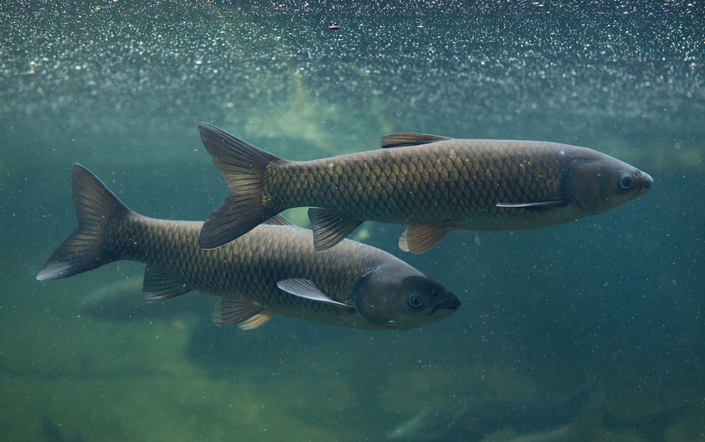
As the field of synthetic biology continues to evolve and promising new applications for tools like CRISPR-Cas9 present themselves, scientists have faced a formidable barrier: How do you prevent genetically modified plants and animals from reproducing with their wild counterparts and spreading out of control?
“This is a problem that has been recognized for a while,” said Maciej Maselko, Ph.D., adding that keeping some transgenic organisms tightly quarantined has been the only solution in the past.
Maselko, a postdoctoral scholar in the BioTechnology Institute and the College of Biological Sciences (CBS), has created a tool that could hold the solution for a wide range of transgenic applications—where pieces of DNA from one organism are moved into another that doesn’t normally have them. His genetic trick, called “synthetic incompatibility,” prevents genetically modified species from reproducing with wild species, helping ensure the transgenic DNA can be more easily contained when introduced into natural ecosystems.
As transferring genes from one species to another offers new ways to solve environmental and health challenges, Maselko’s discovery may lead to important tools for preventing unintended consequences. His work earned him a spot among Stat News’s 2017 “Wunderkinds”—the medical news publication’s list of researchers on the cusp of launching their careers who are blazing new trails in science and medicine.
Maselko works in the lab of Michael Smanski, Ph.D., assistant professor in CBS and BTI, who was principal investigator on the synthetic incompatibility study recently published in Nature Communications.
Preventing Runaway Genes
Normally, regulatory functions in the cells of plants and animals help control whether genes are turned “on” (and producing proteins) or turned “off” (to stop new proteins from being made). Some of these genes have to be very tightly controlled—too much of certain proteins will harm the cell.
Maselko’s technology makes a small mutation to a specific gene that doesn’t change the way its cells behave. He then engineers the organism to make a protein that looks for the original, nonmutated sequence. The only time the protein will find that sequence is when the “synthetic” plant or animal tries to breed with a wild version of its species. When that happens, the protein turns the gene on, and it produces proteins nonstop, being stuck in the “on” position and unable to regulate itself. Pretty soon, that destroys the cell.
In the recent study, Maselko tested this trick on brewer’s yeast. Under a microscope, he watched genetically modified yeast breed with wild yeast to form living offspring that carried genes from both. But when he repeated the experiment with synthetic incompatibility, the offspring yeast quickly inflated like a balloon from excess proteins and then popped, preventing their modified genes from being passed on.
Currently, Maselko is collaborating with U of M experts from across a number of disciplines, including plant biology, entomology, and aquatic species, to learn more about adapting synthetic incompatibility for use in other species, such as fish.
New Possibilities in Gene Modification
In practice, synthetic incompatibility could make a wide variety of different transgenic solutions safer to use and, in some cases, more effective. One of Maselko’s hopes for the tool involves creating a more abundant supply of medicinal compounds that could also be more cost-efficient or environmentally sustainable.
“We get a lot of medications from plants, but the plants that naturally make those medications only do so in really tiny quantities,” he said. “One of my goals is to see if we can get the genes responsible for making those drugs into plants that we can grow on massive scales, such as corn, rice, or wheat.”
Synthetic incompatibility would keep this engineered crop from breeding with its natural counterpart. Not only would that prevent medicinal compounds from crossing into the food we eat, it would also work the opposite direction—preventing outside genes from mixing into the medicinal crop and potentially hampering its ability to produce the pharmaceutical compound.
In another approach, the tool could help curb the spread of invasive species. If scientists modified invasive carp to be incompatible with the fish in the wild, then released only the male fish into a lake, these synthetic carp would still fertilize eggs from wild female carp. Their incompatibility would prevent the eggs from developing, however, cutting down on the wild carp population’s ability to maintain its population.
There are numerous other potential uses for the technology. Maselko said synthetic incompatibility could even allow scientists to engineer fish that break down harmful contaminants in polluted water. In theory, controlled populations of transgenic fish could effectively clean the water they live in.
“Fish don’t naturally have the enzymes necessary to break down some of these compounds, but we know of enzymes that exist that can,” he said. “That’s one of the next steps we’re looking at.”